BOOK OF HOURS, use of Paris, in Latin and French, illuminated manuscript on vellum [Paris, c.1490
BOOK OF HOURS, use of Paris, in Latin and French, illuminated manuscript on vellum [Paris, c.1490] A profusely illustrated Hours in a fine binding. An exceptionally rich example of the most refined style of the artist known as the Master of Jacques de Besançon, recently identified as François le Berbier fils. PROVENANCE : (1) The style of illumination and liturgical use show the manuscript to have been made and intended for use in Paris. Prayers in the feminine form – for example on ff.22v and135v – show the manuscript was destined for a woman. The initials I and M, joined by a tasselled knot, are likely to belong to her and her husband. Suffrages to male and female saints alternate and the first of these is to the Magdalene, perhaps the name saint of the owner. (2) MAURICE BURRUS , no 7. Purchased from Lefrançois, 1937. CONTENT : Calendar ff.1-12v; Gospel Extracts ff.13-20; Obsecro te followed by O intemerata ff.20v-26; Office of the Virgin, use of Paris, interspersed with Short Hours of the Cross (beginning f.46) and of the Holy Spirit (f.47v), ff.27-80; Seven Penitential Psalms ff.81-96; Office of the Dead ff.97-134v; Suffrages to Saints Christopher, Magdalene, Sebastian, Catherine, Lawrence, Apollonia, Barbara, Nicholas and Avia ff.135-144v. ILLUMINATION : The prevalent style of illumination in Paris in the second half of the 15th century can be traced through the work of three successive illuminators: the Master of Jean Rolin (see lot 9), Maître François and the Master of Jacques de Besançon (see Avril & Reynaud, Les manuscrits à peintures en France , 1993, pp.38-52 and 256-262). Alongside a prolific and more routine output, most of the prestigious commissions from the court and leading ecclesiastics were fulfilled by this trio. On the basis of the close correspondence of archival evidence with the attributed oeuvres of Maître François and the Master of Jacques de Besançon their identification as the father and son illuminators, both named François le Berbier, has been generally accepted: see M. Deldicque, ‘L’enluminure à Paris à la fin du XVe siècle: Maître François le Maître de Jacques de Besançon et Jacques de Besançon identifiés’, Revue de l’Art , 2014, pp.9-18. This is a particularly polished example of the work of the son. In spite of the relatively small scale of the book, settings are comprehensively evoked, whether interiors, which are full of architectural detail and furnishings and often have views through windows, or landscapes, which recede convincingly showing distant and informative prospects. Saint Avia, for example (f.144) is imprisoned in the corner tower of a city wall that encompasses various buildings, while in the background another city lies beyond a river where boats ply to and fro. Scenes are not static and the choice of subject is often for a less common narrative. Rather than showing the Evangelist seated on Patmos, the Gospel Extracts open with John in the Temple at Ephesus. He stands before the priest holding the chalice as the poison that has already killed the two fallen men turns to snakes leaving the cup innocuous. Similarly the prayer to the Magdalene shows her at the house of Simon drying Christ’s feet with her hair. The palette is sophisticated and subtle with gentle gradations of tone and an attractive soft, almost dusty, finish. Flesh tones of women and youths are pale and porcelain-like. This work is comparable in quality, if not in size, to the manuscripts the Master illuminated for the princes and aristocrats of France. The subjects of the miniatures are: John the Evangelist with the poisoned chalice f.13, St Luke f.15, St Matthew f.17, St Mark f.19, Virgin and Child enthroned, attendant angels f.20v, Annunciation f.27, Visitation f.36v, Crucifixion f.46, Pentecost f.47v, Nativity 49, Annunciation to the Shepherds f.55, Adoration of the Magi f.60, Presentation in the Temple f.64v, Flight into Egypt f.68v, Coronation of the Virgin f.75, David in Penitence f.81, Burial
BOOK OF HOURS, use of Paris, in Latin and French, illuminated manuscript on vellum [Paris, c.1490
BOOK OF HOURS, use of Paris, in Latin and French, illuminated manuscript on vellum [Paris, c.1490] A profusely illustrated Hours in a fine binding. An exceptionally rich example of the most refined style of the artist known as the Master of Jacques de Besançon, recently identified as François le Berbier fils. PROVENANCE : (1) The style of illumination and liturgical use show the manuscript to have been made and intended for use in Paris. Prayers in the feminine form – for example on ff.22v and135v – show the manuscript was destined for a woman. The initials I and M, joined by a tasselled knot, are likely to belong to her and her husband. Suffrages to male and female saints alternate and the first of these is to the Magdalene, perhaps the name saint of the owner. (2) MAURICE BURRUS , no 7. Purchased from Lefrançois, 1937. CONTENT : Calendar ff.1-12v; Gospel Extracts ff.13-20; Obsecro te followed by O intemerata ff.20v-26; Office of the Virgin, use of Paris, interspersed with Short Hours of the Cross (beginning f.46) and of the Holy Spirit (f.47v), ff.27-80; Seven Penitential Psalms ff.81-96; Office of the Dead ff.97-134v; Suffrages to Saints Christopher, Magdalene, Sebastian, Catherine, Lawrence, Apollonia, Barbara, Nicholas and Avia ff.135-144v. ILLUMINATION : The prevalent style of illumination in Paris in the second half of the 15th century can be traced through the work of three successive illuminators: the Master of Jean Rolin (see lot 9), Maître François and the Master of Jacques de Besançon (see Avril & Reynaud, Les manuscrits à peintures en France , 1993, pp.38-52 and 256-262). Alongside a prolific and more routine output, most of the prestigious commissions from the court and leading ecclesiastics were fulfilled by this trio. On the basis of the close correspondence of archival evidence with the attributed oeuvres of Maître François and the Master of Jacques de Besançon their identification as the father and son illuminators, both named François le Berbier, has been generally accepted: see M. Deldicque, ‘L’enluminure à Paris à la fin du XVe siècle: Maître François le Maître de Jacques de Besançon et Jacques de Besançon identifiés’, Revue de l’Art , 2014, pp.9-18. This is a particularly polished example of the work of the son. In spite of the relatively small scale of the book, settings are comprehensively evoked, whether interiors, which are full of architectural detail and furnishings and often have views through windows, or landscapes, which recede convincingly showing distant and informative prospects. Saint Avia, for example (f.144) is imprisoned in the corner tower of a city wall that encompasses various buildings, while in the background another city lies beyond a river where boats ply to and fro. Scenes are not static and the choice of subject is often for a less common narrative. Rather than showing the Evangelist seated on Patmos, the Gospel Extracts open with John in the Temple at Ephesus. He stands before the priest holding the chalice as the poison that has already killed the two fallen men turns to snakes leaving the cup innocuous. Similarly the prayer to the Magdalene shows her at the house of Simon drying Christ’s feet with her hair. The palette is sophisticated and subtle with gentle gradations of tone and an attractive soft, almost dusty, finish. Flesh tones of women and youths are pale and porcelain-like. This work is comparable in quality, if not in size, to the manuscripts the Master illuminated for the princes and aristocrats of France. The subjects of the miniatures are: John the Evangelist with the poisoned chalice f.13, St Luke f.15, St Matthew f.17, St Mark f.19, Virgin and Child enthroned, attendant angels f.20v, Annunciation f.27, Visitation f.36v, Crucifixion f.46, Pentecost f.47v, Nativity 49, Annunciation to the Shepherds f.55, Adoration of the Magi f.60, Presentation in the Temple f.64v, Flight into Egypt f.68v, Coronation of the Virgin f.75, David in Penitence f.81, Burial
.jpg)
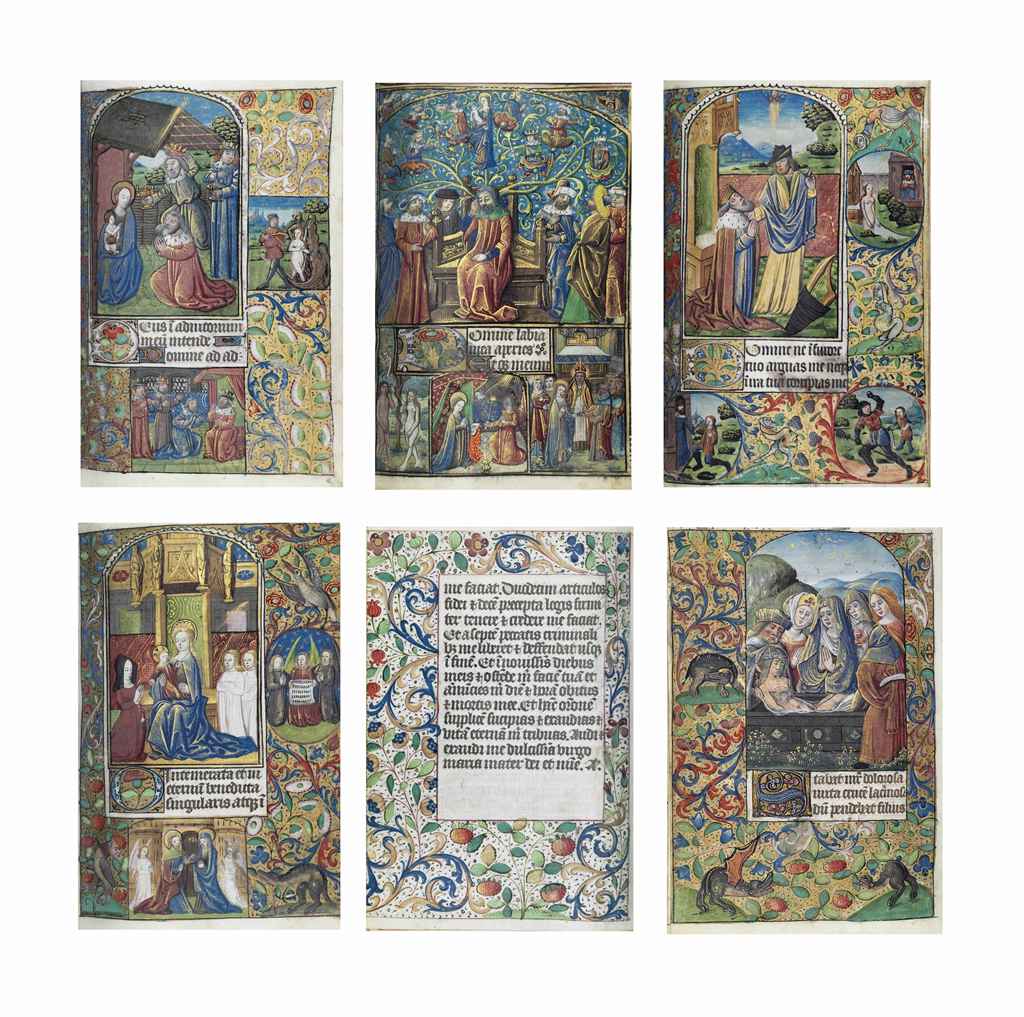
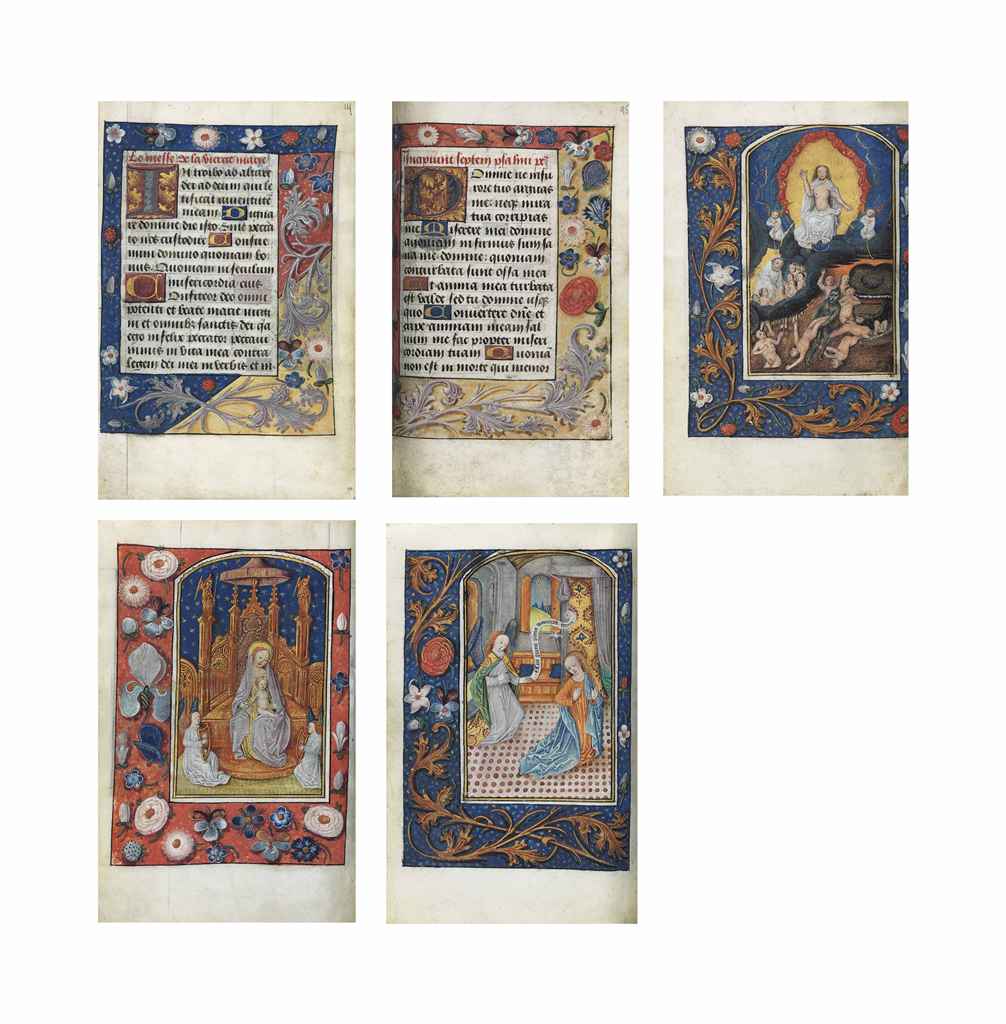
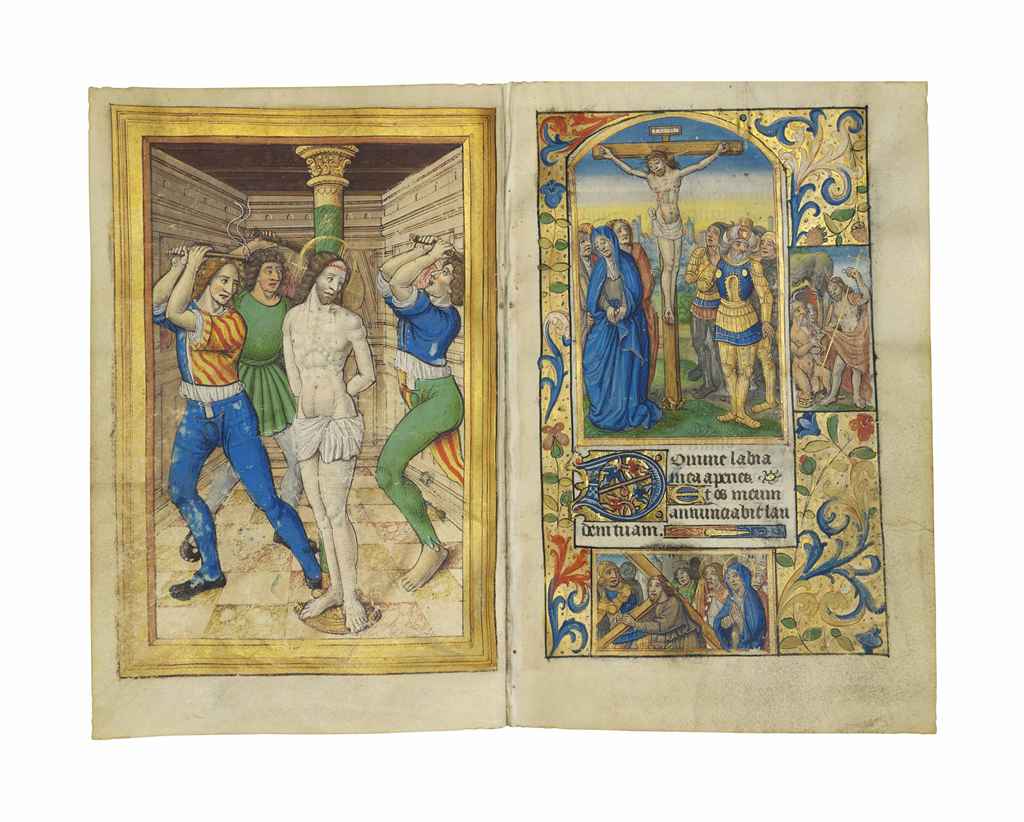
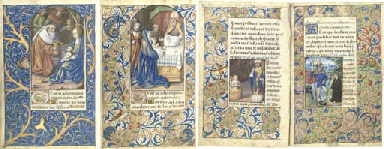
.jpg)
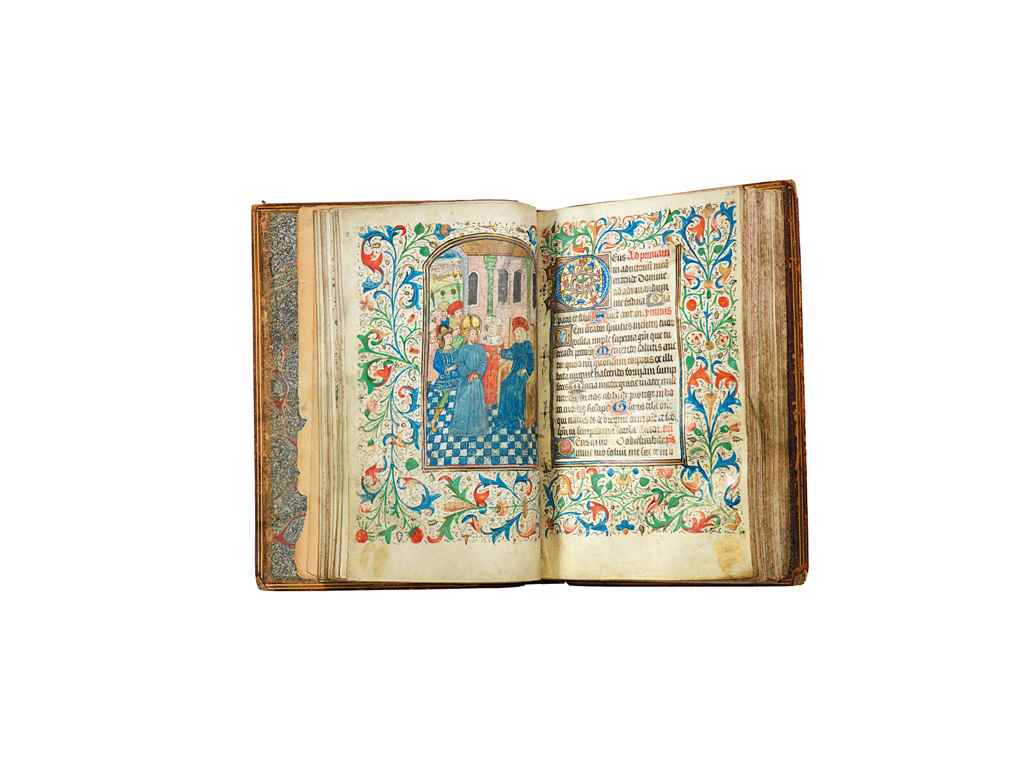


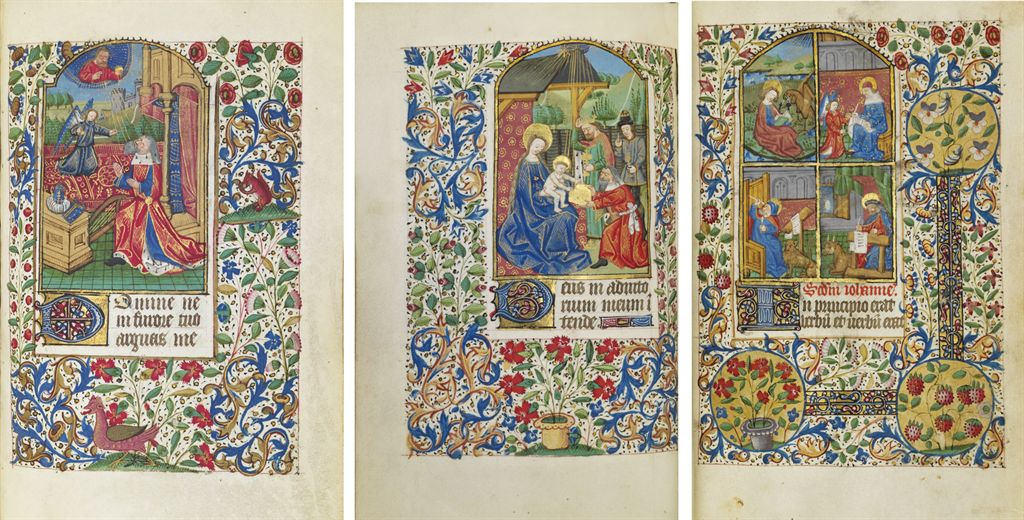
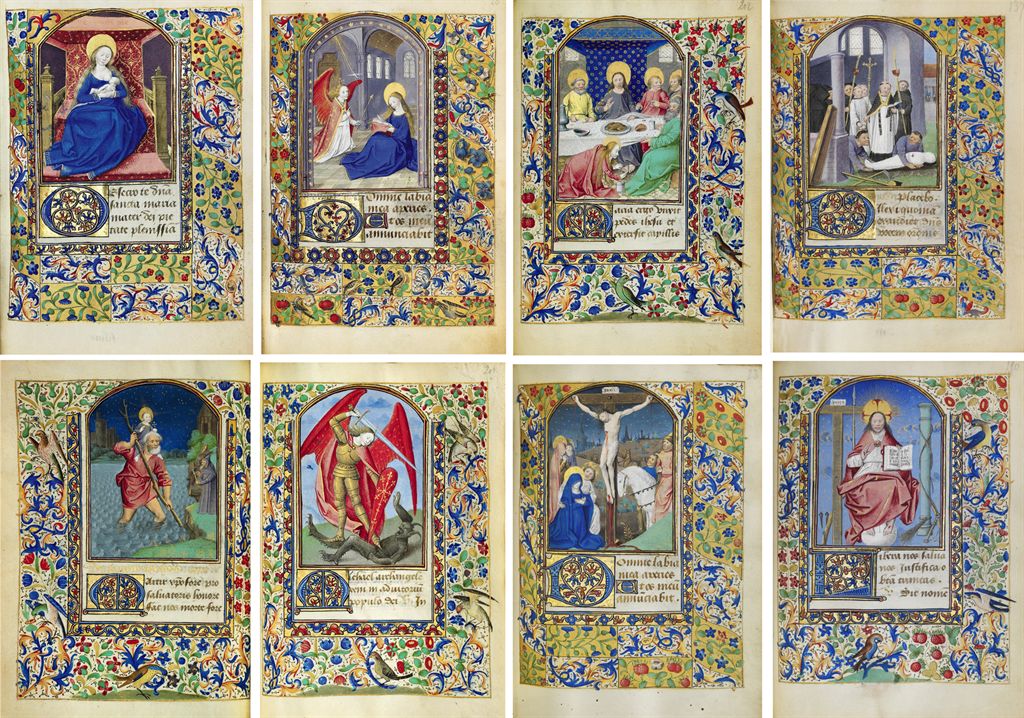
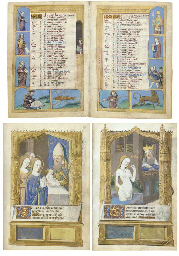
.jpg)


Try LotSearch and its premium features for 7 days - without any costs!
Be notified automatically about new items in upcoming auctions.
Create an alert